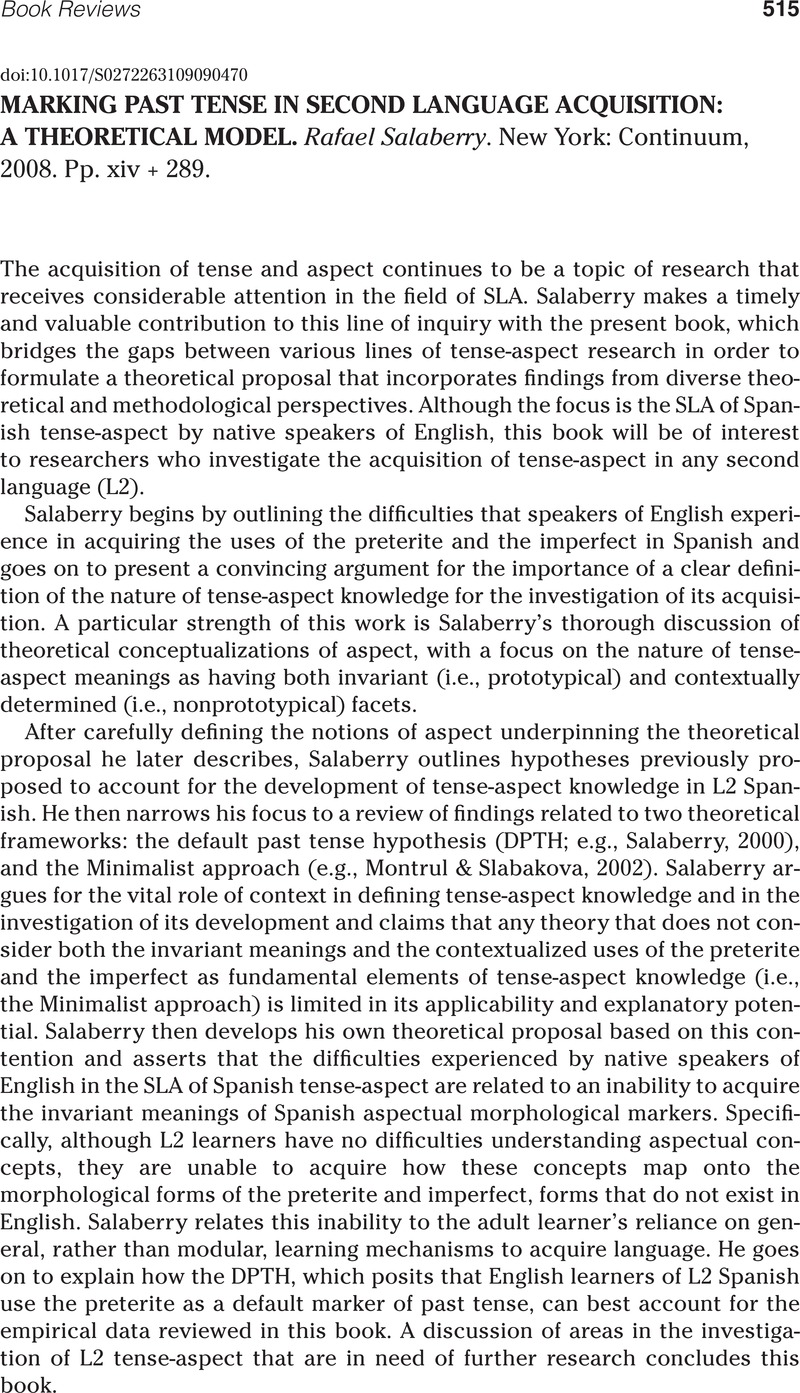Crossref Citations
This article has been cited by the following publications. This list is generated based on data provided by Crossref.
Minnillo, Sophia
Sánchez-Gutiérrez, Claudia
Carando, Agustina
Davidson, Samuel
Fernández Mira, Paloma
and
Sagae, Kenji
2022.
Preterit-imperfect acquisition in L2 Spanish writing: Moving beyond lexical aspect.
Research in Corpus Linguistics,
Vol. 10,
Issue. 1,
p.
156.





